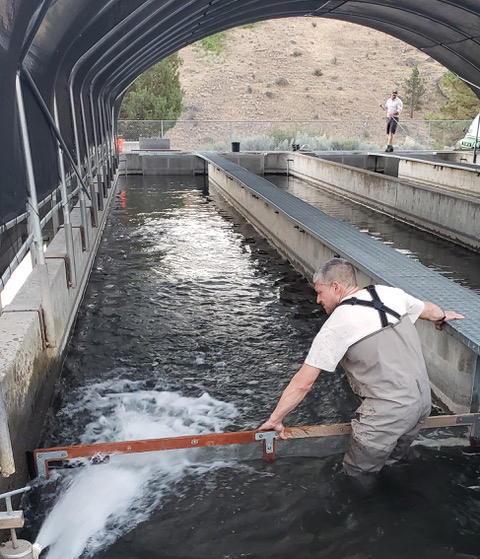Michigan: Action Plan Shares Direction for Arctic Grayling Efforts

The Michigan Arctic Grayling Initiative – a statewide partnership effort focused on restoring self-sustaining populations of this native fish – unveiled its official action plan at Thursday’s Natural Resources Commission meeting in Lansing. The plan details the initiative’s goals and various activities it plans to accomplish over the next several years.
This initiative, founded by the Michigan Department of Natural Resources and the Little River Band of Ottawa Indians, was announced in June 2016 and consists of 32 organizations.
The action plan is the result of multiple meetings of the partners where ideas, questions and information gaps were identified and then condensed into four main focus areas: research, management, fish production and outreach and education.
“Large populations of Arctic grayling were once found throughout Michigan’s Lower Peninsula and even in an Upper Peninsula stream – in fact, this iconic, cold-water fish species was native only to Michigan and Montana in the lower 48 states,” said DNR Fisheries Chief Jim Dexter. “With the launch of the Arctic grayling action plan, we’re moving an important step closer to making it possible for residents and visitors to once again find this slate-blue beauty with the distinctive dorsal fin in Michigan waters.”
This initiative is looking for resources from a variety of sources to help reach its goals, like the Consumers Energy Foundation grant the DNR, the Little River Band of Ottawa Indians and Michigan Technological University received in February 2017. These funds are being used to collect habitat and fish community data in the upper Big Manistee River and create an outreach plan to engage Michigan citizens in the reintroduction efforts and once again make Arctic grayling an important part of Michigan’s heritage.
“Contributions by organizations like the Consumers Energy Foundation are invaluable as this initiative works toward making a dream a reality,” said Frank Beaver, director of the Little River Band of Ottawa Indians’ Natural Resources Department. “It’s so exciting to see so many partners working to try and bring back this significant species.”
Representatives from both the DNR and the Little River Band of Ottawa Indians were on hand at yesterday’s Natural Resources Commission meeting to share details of the plan.
For more information on the history of Arctic grayling in Michigan, visit the initiative’s newly launched website at migrayling.org.





